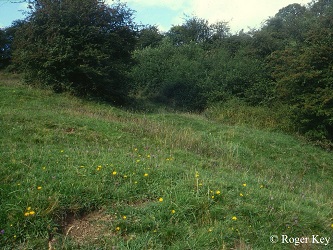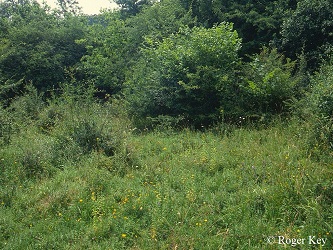Current ISIS code: F001
Previous assemblage name: F212
Linked assemblage: Various
Description of habitat typically supporting the assemblage: This assemblage type is characterised by a wide range of invertebrates but especially aculeates.
The assemblage type is found where scrub or woodland grades into or is interspersed with open areas of grassland, heathland or early successional vegetation types. The juxtaposition of open vegetation with woody development is important to insects with complex life cycles that require different microhabitats at different stages of development.

This is a resource-based assemblage type that replaced the old F212 scrub edge SAT. This change allows the assemblage type to be expressed in early successional habitat matrices in addition to close sward grassland matrices. It has been successfully detected in scattered scrub and, in one case, a landscape of meadows and hedgerows. It links clearly to scrub management and the maintenance of graded edge habitats. Garden sites also score comparatively well, though not as well as high quality habitat on SSSIs. The default threshold for favourable condition was set using data from the south-east. It may have to be reduced for more northerly regions.

The balance between woody growth and the factors which limit it is often a fine one and sites may undergo cycles of changing proportions of open grassland and woody growth as a result. This is especially the case where human intervention is required to maintain open conditions so that land use and its underlying economic factors have a pervading influence on this dynamic equilibrium.
Potentially important environmental impacts
- Cessation of ride maintenance.
- Cessation of coppice management.
- Scrub clearance
Sampling & assessing the assemblage
Standard sampling protocols apply, though sweeping time should be increased.
Target groups: aculeates, Coleoptera, larger Diptera, day-flying Lepidoptera, Heteroptera, Orthoptera
Fieldwork methods: Sweep netting, spot sweeping, beating
Alternative methods: Suction sampling can be deployed to good effect
Season: May-September
